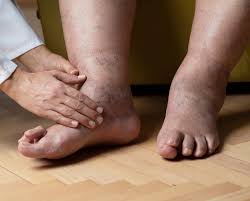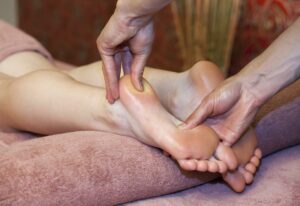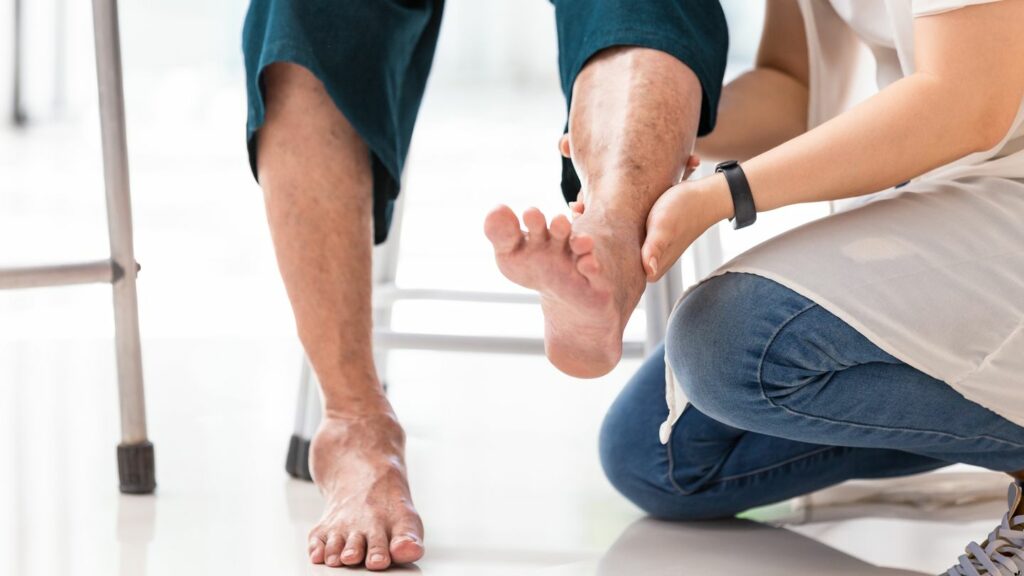Diabetic neuropathy is a common and often debilitating complication of diabetes, affecting a significant number of individuals worldwide. It is a type of nerve damage that can result from prolonged exposure to high levels of blood sugar. Managing and treating diabetic neuropathy is crucial to improving the quality of life for those affected. In this comprehensive guide, we will explore the various aspects of diabetic neuropathy treatment, including medical interventions, lifestyle changes, and alternative therapies.
What is Diabetic Neuropathy?

Diabetic neuropathy is a type of nerve damage that can occur in individuals with diabetes. It is a common and serious complication of diabetes, resulting from prolonged exposure to high levels of blood sugar (glucose). Diabetes, especially when poorly controlled, can lead to damage to the nerves throughout the body. The nervous system consists of a complex network of nerves that transmit signals between different parts of the body and the brain.
There are several types of diabetic neuropathy, and they can affect various parts of the body, including the peripheral nerves, which are responsible for transmitting signals between the central nervous system (brain and spinal cord) and the rest of the body. The most common types of diabetic neuropathy include:
Peripheral Neuropathy:
- Peripheral neuropathy is the most prevalent form of diabetic neuropathy. It primarily affects the nerves in the feet and legs, but it can also involve the nerves in the arms and hands.
- Symptoms may include numbness, tingling, burning sensations, and pain in the affected areas.
- Loss of sensation in the feet can lead to an increased risk of injuries and infections, as individuals may not feel pain or notice trauma.
Autonomic Neuropathy:
- Autonomic neuropathy affects the nerves that control involuntary bodily functions, such as heart rate, blood pressure, digestion, and bladder function.
- Symptoms may include dizziness, lightheadedness, digestive issues, sexual dysfunction, and difficulty regulating body temperature.
Proximal Neuropathy:
- Proximal neuropathy, also known as diabetic amyotrophy or radiculoplexus neuropathy, affects the nerves in the thighs, hips, buttocks, and legs.
- Symptoms may include severe pain, weakness, and atrophy (muscle wasting) in the affected areas.
Types of Diabetic Neuropathy Treatment Options
Diabetic neuropathy treatment options vary based on the specific type of neuropathy and the symptoms experienced by the individual. Here are the types of diabetic neuropathy and their corresponding treatment options:
Medications
Medications play a crucial role in managing the symptoms of diabetic neuropathy. Several classes of drugs are commonly prescribed to alleviate pain, improve nerve function, and enhance the overall quality of life for individuals with this condition.
Analgesic Medications:
Analgesics, or pain relievers, are often recommended to manage the pain associated with diabetic neuropathy. While over-the-counter options like acetaminophen may provide some relief, prescription medications are frequently needed for more severe pain. These may include opioids in carefully managed doses to avoid dependence or addiction.
Antidepressants:
Certain antidepressant medications, particularly tricyclic antidepressants (TCAs) and selective serotonin and norepinephrine reuptake inhibitors (SNRIs) have proven effective in treating neuropathic pain. Amitriptyline, a TCA, and duloxetine, an SNRI, are examples commonly prescribed. These medications not only address pain but may also have mood-stabilizing effects, providing a dual benefit.
Anti-seizure Medications:
Drugs originally designed to manage seizures, such as gabapentin and pregabalin, have demonstrated efficacy in treating neuropathic pain. These medications modulate the activity of nerve cells, helping to reduce pain signals. They are often considered as a first-line treatment for diabetic neuropathy.
Topical Treatments
Topical treatments can provide localized relief for individuals with diabetic neuropathy, particularly those experiencing pain in specific areas.
Lidocaine Patches:
Lidocaine patches are adhesive patches that contain a local anesthetic (lidocaine). When applied to the skin, these patches numb the area, providing temporary relief from pain. They are especially useful for individuals who experience localized pain in specific regions.
Capsaicin Cream:
Derived from chili peppers, capsaicin is known for its ability to desensitize nerves. Capsaicin creams, when applied topically, may reduce the intensity of pain signals by depleting substance P, a neurotransmitter involved in pain perception. Regular use over time is often required for optimal effectiveness.
Lifestyle Changes

In addition to medications, lifestyle modifications are crucial for managing diabetic neuropathy. These changes aim to control blood sugar levels, improve overall health, and minimize the impact of neuropathic symptoms.
Blood Sugar Control:
Maintaining target blood sugar levels is fundamental in preventing and managing diabetic neuropathy. Regular monitoring, adherence to a diabetes management plan, and adjustments in medication or insulin doses are essential components of effective blood sugar control.
Healthy Diet:
A balanced and nutritious diet is vital for individuals with diabetes. Emphasizing whole grains, fruits, vegetables, and lean proteins can help stabilize blood sugar levels. Avoiding excessive intake of processed sugars and refined carbohydrates is equally important.
Regular Exercise:
Physical activity offers numerous benefits for individuals with diabetic neuropathy. Exercise improves blood circulation, helps control blood sugar levels, and promotes overall well-being. Low-impact activities such as walking, swimming, and cycling are often recommended, along with strength training exercises to enhance muscle function.
Foot Care:
Given that diabetic neuropathy often affects the feet, proper foot care is crucial. Regular foot inspections, good hygiene practices, and wearing comfortable, well-fitted shoes can prevent complications such as infections and ulcers.
Alternative Therapies
Some individuals explore alternative therapies to complement traditional medical treatments for diabetic neuropathy. While research on their efficacy is ongoing, certain therapies may provide relief for some patients.
Acupuncture:
Acupuncture, a traditional Chinese medicine practice, involves the insertion of thin needles into specific points on the body. Some individuals report a reduction in neuropathic pain after acupuncture sessions. The mechanism may involve the stimulation of nerve pathways and the release of endorphins, the body’s natural painkillers.
Biofeedback
Biofeedback techniques involve the use of electronic monitoring to help individuals gain control over physiological functions such as heart rate, muscle tension, and skin temperature. By learning to manipulate these functions, individuals may experience stress reduction and, subsequently, neuropathic pain.
Nutritional Supplements:
Certain nutritional supplements have shown promise in managing diabetic neuropathy symptoms.
- Alpha-Lipoic Acid: An antioxidant, alpha-lipoic acid has demonstrated potential in improving neuropathic symptoms and reducing oxidative stress.
- B Vitamins: Supplementation with B vitamins, particularly B12 and B6, may support nerve health and function.
Regular Monitoring and Follow-Up
Regular monitoring and follow-up with healthcare professionals are essential aspects of diabetic neuropathy treatment.
Healthcare Team Collaboration:
Collaboration with a healthcare team, including endocrinologists, neurologists, and other specialists, is critical. Regular check-ups allow for the monitoring of symptom progression, adjustment of treatment plans, and addressing any emerging concerns.
Adaptation of Treatment Plan:
As symptoms may change over time, an adaptive approach to treatment is necessary. The healthcare team may need to modify medications, dosages, or therapies to achieve optimal results for the individual.
Physical Therapy
Physical therapy is a valuable component of diabetic neuropathy treatment, focusing on enhancing strength, flexibility, and balance. A physical therapist can design a personalized exercise program to address specific neuropathic symptoms. Exercises may include stretching, strengthening, and balance training to improve overall mobility and reduce the risk of falls.
In cases of diabetic proximal neuropathy, where weakness and muscle wasting may occur, physical therapy becomes particularly important. Therapists can guide individuals through targeted exercises to address muscle imbalances and restore functional strength.
Moreover, physical therapists can educate patients on proper body mechanics and ergonomics, helping them avoid positions and movements that may exacerbate neuropathic symptoms. The goal is to empower individuals with diabetic neuropathy to maintain independence and prevent further complications related to physical limitations.
Transcutaneous Electrical Nerve Stimulation (TENS)
Transcutaneous Electrical Nerve Stimulation (TENS) is a non-invasive therapy that involves the use of low-voltage electrical currents to alleviate pain. Small electrodes are placed on the skin, delivering electrical impulses to the affected nerves. TENS is thought to interfere with pain signals and stimulate the release of endorphins, the body’s natural painkillers.
While TENS is generally considered safe, it’s essential to use it under the guidance of a healthcare professional. TENS units are available for home use, allowing individuals to self-administer therapy as needed. This approach provides an additional tool for managing neuropathic pain without relying solely on medications.
Massage Therapy

Massage therapy can offer relief from the discomfort associated with diabetic neuropathy. While it doesn’t directly treat the underlying nerve damage, massage can help relax muscles, improve circulation, and reduce stress, contributing to an overall sense of well-being.
Certain massage techniques, such as Swedish massage or gentle compression, may be beneficial for individuals with diabetic neuropathy. It’s crucial to communicate openly with the massage therapist about the specific symptoms and areas of concern to ensure a safe and effective session.
Additionally, self-massage techniques, taught by a qualified therapist, can empower individuals to incorporate massage into their daily routine for ongoing symptom management.
Occupational Therapy
Occupational therapy is another essential aspect of diabetic neuropathy treatment, particularly for individuals experiencing difficulties with daily activities due to sensory or motor impairments. Also, Occupational therapists assess an individual’s functional abilities and tailor interventions to improve independence in tasks such as dressing, grooming, and cooking.
For those with diabetic neuropathy affecting the hands and fingers, occupational therapy may include exercises to enhance fine motor skills, sensory training, and the use of adaptive devices to facilitate daily tasks. By addressing specific challenges, occupational therapy aims to optimize an individual’s ability to participate in daily life despite the limitations imposed by diabetic neuropathy.
Surgical Interventions
In severe cases of diabetic neuropathy, where the pain is resistant to conservative treatments and there is a risk of complications, surgical interventions may be considered. These procedures aim to alleviate pressure on affected nerves or address other structural issues contributing to neuropathic symptoms.
- Nerve Decompression Surgery: In cases of focal neuropathy, where compression of a specific nerve is identified, decompression surgery may be performed. This involves releasing the pressure on the affected nerve, potentially providing relief from pain and other symptoms.
- Joint Debridement: In individuals with diabetic neuropathy affecting the joints, joint debridement surgery may be considered to remove damaged tissue and alleviate pain.
It’s important to note that surgical interventions are typically reserved for specific cases and are considered when other conservative treatments have not been successful.
Conclusion
Effectively managing diabetic neuropathy involves a multi-faceted approach, combining medical interventions, lifestyle modifications, and alternative therapies. Individuals with diabetes should work closely with their healthcare team to create a personalized treatment plan that addresses their specific needs. By maintaining good blood sugar control, adopting a healthy lifestyle, and exploring various treatment options, individuals with diabetic neuropathy can significantly improve their quality of life and reduce the impact of this challenging condition.
Do you want to get rid of diabetes? Join our online diabetes treatment program and reverse Diabetes naturally through lifestyle changes such as a Personalized Diet plan, Exercise, Yoga, dieticians, and health coaches.

